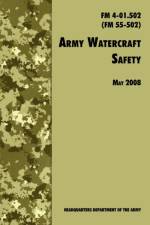- The Official U.S. Army Field Manual FM 3-04.300 (August 2008 Revision)
von Army Aviation Center of Excellence, Army Training, Doctrine Command & usw.
24,00 €
Field manual (FM) 3-04.300 is designed to serve as a doctrinal guide focusing on the primary aspects of airfield procedures in full spectrum operations. While it contains guidelines for aviation unit commanders and aviators, the manual is intended primarily for use by airfield operations battalions (AOBs) and installation flight operations personnel. It is applicable to division, corps, Theater Aviation Command (TAC), Theater and Area Sustainment Commands, and the Army aviation community, including members of allied, coalition, and civil support forces. This manual outlines the organization and services of the theater airfield operations groups (TAOGs), AOBs, aviation unit plans and operations staff, and installation airfield management operations. It explains personnel qualifications, duties, and responsibilities; it provides information on airfield design and security and support requirements when planning and operating an airfield within a theater of operations (TO) or during homeland security operations. Installation airfield management structure, responsibilities, services, safety, and National Airspace System (NAS) requirements are presented in part III of this manual. Appendix A details the numerous checklists necessary for adequate airfield assessment and the duties required for airfield opening. Appendix B discusses the characteristics of military aircraft. Appendix C addresses Army and Air Force airfield planning. Appendix D discusses letters and facility memorandums. Appendix E discusses emergency plans and procedures.



